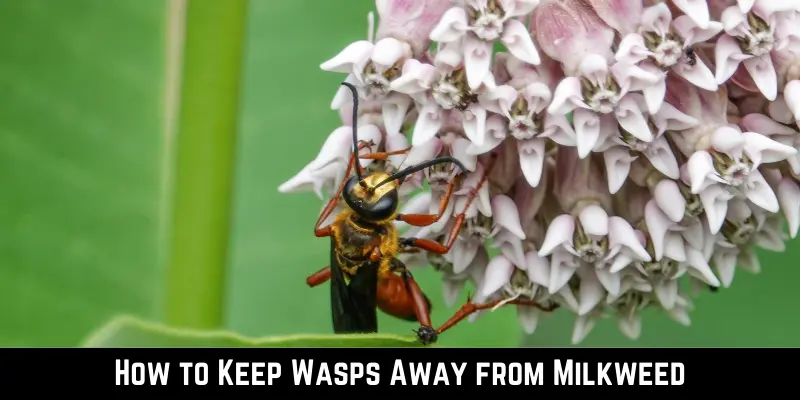Are you struggling with wasps hovering around your milkweed plants? You’re not alone. Many gardeners face this challenge, especially those passionate about attracting monarch butterflies to their gardens. The query that brings us here today is: How to Keep Wasps Away from Milkweed?
Wasps are attracted to milkweed for its nectar and potential prey, like caterpillars. However, there are effective and safe methods to deter them, ensuring your garden remains a haven for butterflies without harming any beneficial insects. In this blog post, we will explore various strategies and tips to help you manage wasps around your milkweed plants.
Keep reading as we delve into practical solutions and expert advice to make your garden a safe space for monarchs and other beneficial insects while keeping wasps at bay.
The Importance of Milkweed
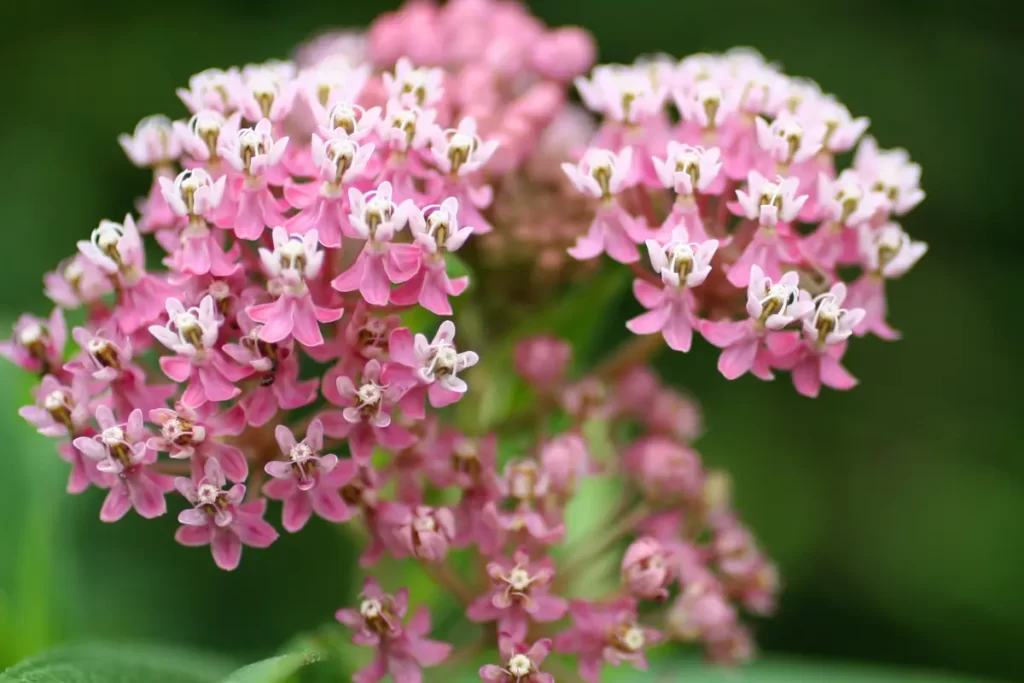
Milkweed plays a crucial role in the ecosystem, particularly for monarch butterflies. This plant is the only food source for monarch caterpillars, making it vital for their survival and reproduction.
When we talk about milkweed, we refer to a group of plant species in the Asclepias genus, known for their milky sap. These plants are not just important for monarchs; they also provide nectar for various pollinators, including bees and other butterflies, contributing to biodiversity.
Moreover, milkweed has adaptations that help protect monarchs. The sap contains toxic compounds to most predators, but monarch caterpillars have evolved to tolerate and accumulate these toxins, making them less appealing to predators. This unique relationship highlights the importance of preserving milkweed plants in natural habitats and encouraging their growth in gardens.
Protecting milkweed is also crucial for conservation efforts. The monarch butterfly population has declined due to habitat loss, pesticide use, and other factors.
By ensuring the availability of milkweed, we contribute to creating safe havens for these butterflies, supporting their life cycle and migration patterns. In turn, this helps to maintain the balance of our ecosystems and preserve the natural beauty of these iconic butterflies.
What are Milkweeds?
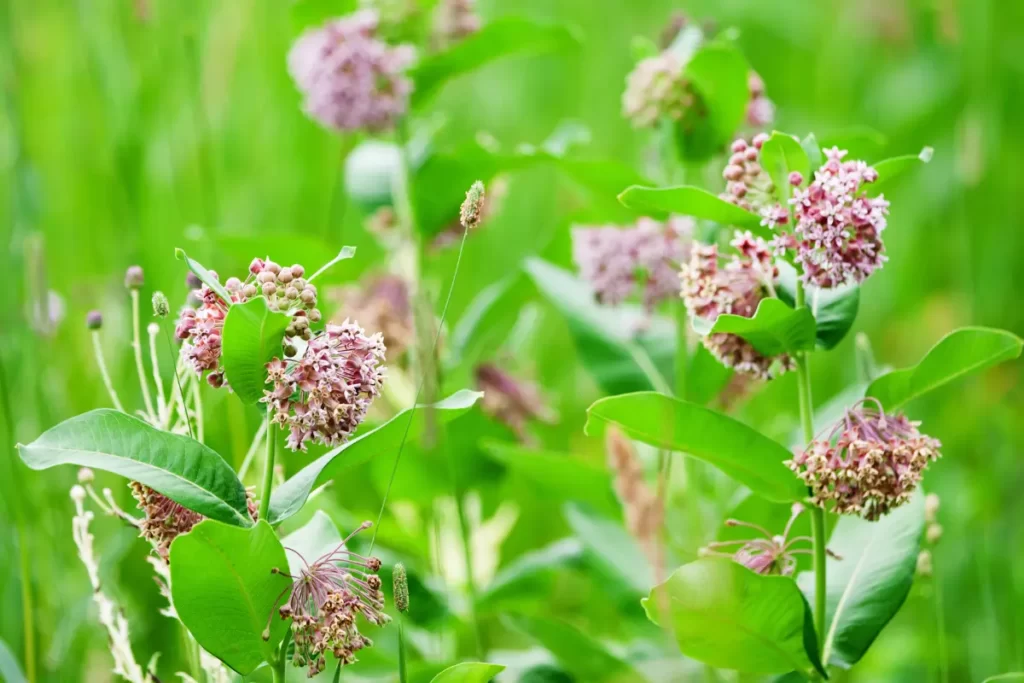
Milkweeds are perennial plants from the Asclepias genus, characterized by their milky sap, complex flowers, and unique seed pods. There are over 100 species of milkweed native to North America, each adapted to different environments and climates. These plants vary in size, color, and habitat, but all share the common feature of producing latex sap when their stems or leaves are damaged.
The flowers of milkweed are intricate and attract a variety of pollinators with their nectar. After pollination, milkweed plants produce seed pods filled with seeds attached to silky hairs, allowing them to be carried by the wind and dispersed over long distances. This adaptation ensures the survival and spread of milkweed populations, contributing to their resilience in various habitats.
Milkweed plants play a crucial role in the life cycle of monarch butterflies. Female monarchs lay their eggs exclusively on milkweed leaves, providing the hatching caterpillars with a ready food source.
As the caterpillars feed on the leaves, they ingest the toxic compounds in the sap, which protect predators. This unique relationship between milkweed and monarchs is a fascinating example of coevolution and mutual dependence, underscoring the importance of preserving milkweed habitats.
Why Protect Milkweeds from Wasps?
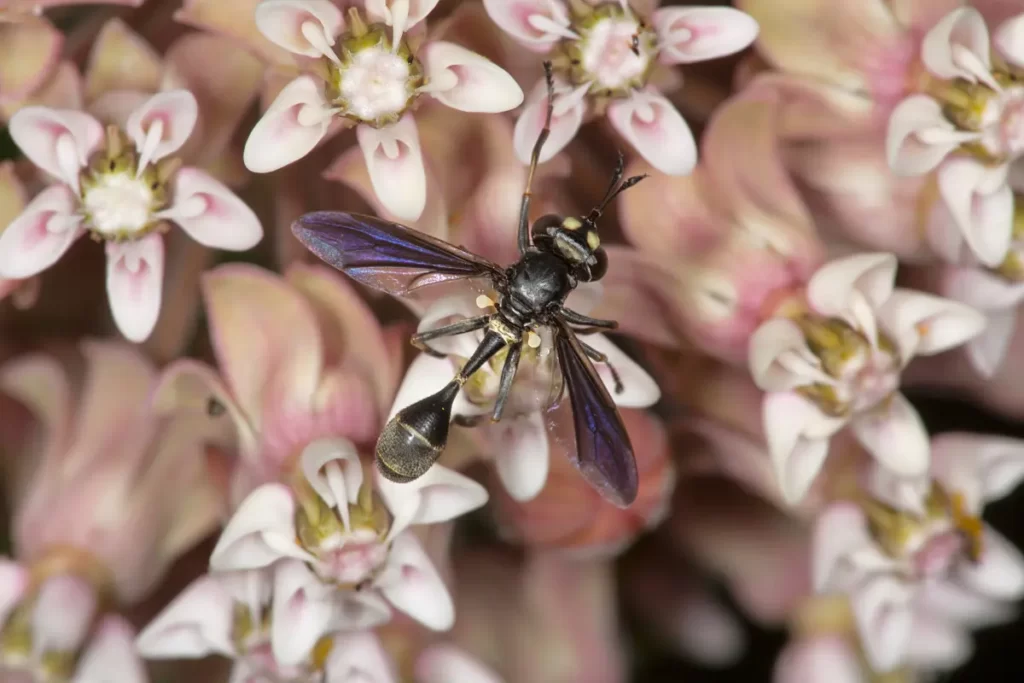
Protecting milkweed from wasps is essential to ensure the safety and survival of monarch butterflies. Wasps pose a significant threat to monarch caterpillars, as they are known to prey on them. The caterpillars are vulnerable, especially when they are young and haven’t ingested enough of the milkweed’s toxic compounds to deter predators.
By keeping wasps away from milkweed, we create a safer environment for monarch caterpillars to grow and develop. This is particularly important given the declining monarch populations and the need for conservation efforts to protect this species.
Ensuring the availability of safe and secure habitats is a crucial step in supporting the life cycle of monarch butterflies and contributing to their conservation.
Moreover, protecting milkweed from wasps also helps to maintain the balance of the ecosystem. Milkweed plants are not only important for monarchs; they also serve as a nectar source for a variety of other pollinators.
By managing wasp populations around milkweed, we ensure that these plants can continue to play their role in supporting biodiversity and maintaining healthy ecosystems.
Understanding Wasps Around Milkweeds
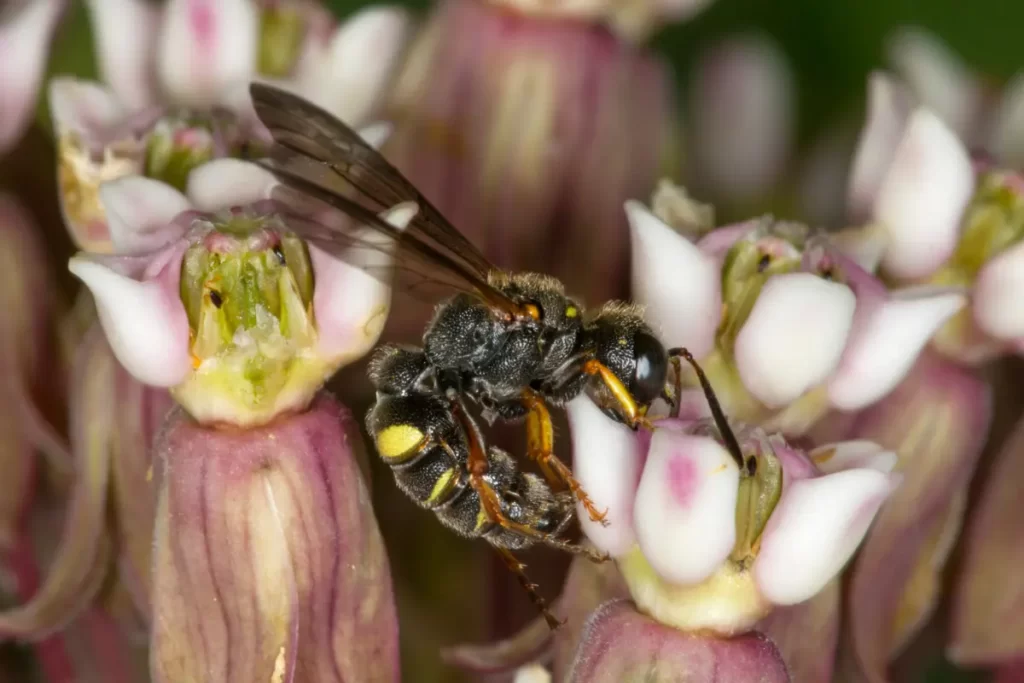
Wasps are common predators around milkweed plants, and their presence can pose a threat to monarch caterpillars and other beneficial insects. To better protect milkweeds and the wildlife that depend on them, it’s important to understand the types of wasps that are attracted to these plants and why they attack. Below is a table detailing different types of wasps, how they interact with milkweeds, and the reasons behind their behavior.
Types of Wasps That Attack Milkweeds
| Type of Wasp | How They Attack Milkweeds | Why They Attack Milkweeds |
| Paper Wasps | They prey on caterpillars and small insects. | Paper wasps feed on the protein from caterpillars and other insects to nourish their larvae. The milkweed attracts a variety of insects, providing a rich hunting ground for these wasps. |
| Yellow Jackets | They aggressively attack and eat caterpillars. | Similar to paper wasps, yellow jackets are attracted to the protein-rich caterpillars found on milkweed plants. They are known for their aggressive behavior, especially when feeding or defending their nests. |
| Mud Daubers | They paralyze caterpillars to feed their larvae. | Mud daubers use the caterpillars as a food source for their larvae. They sting and paralyze the caterpillars before bringing them back to their nests. |
| Potter Wasps | They lay eggs on caterpillars and small insects. | Potter wasps use caterpillars as a host for their larvae. The female wasp lays an egg on the caterpillar, and when the egg hatches, the larva feeds on the caterpillar. |
| Parasitoid Wasps (Braconids) | They lay eggs inside or on the caterpillars. | These wasps use the caterpillars as a host for their young. The larvae feed on the inside of the caterpillar, eventually leading to its death. They are considered beneficial for pest control but can harm monarch populations. |
| Hornet Wasps | Aggressive hunting of caterpillars and insects. | Hornets, like other wasps, are attracted to milkweeds due to the abundance of prey like caterpillars and small insects, which provide a food source for their larvae. Their aggressive nature makes them formidable predators. |
| Spider Wasps | They hunt and paralyze spiders on milkweeds. | While not directly preying on caterpillars, spider wasps contribute to the ecosystem around milkweeds. They help control spider populations, which could indirectly benefit caterpillars. |
| Great Golden Digger Wasps | They prey on crickets and other insects. | These solitary wasps hunt insects larger than caterpillars, such as crickets, which may also be found around milkweed plants. They play a role in balancing the insect population. |
| Cuckoo Wasps | Larvae feed on host larva inside nests. | Cuckoo wasps lay their eggs in the nests of other wasps and bees. Their larvae may consume the host’s larvae and the food provisions stored there. This indirect interaction still affects the overall ecosystem around milkweeds. |
| Ensign Wasps | They parasitize cockroach eggs. | Ensign wasps do not directly interact with milkweeds or caterpillars but contribute to controlling pest populations, such as cockroaches, maintaining a balanced ecosystem. |
Understanding the diversity of wasp species and their varying interactions with milkweeds and the surrounding ecosystem is crucial for conservation efforts. By identifying which wasps are beneficial and which may threaten milkweed habitats, we can better implement strategies to protect these vital plants and the wildlife that depend on them.
Wasps and Their Behavior
The table below provides insights into the behavior of various types of wasps found around milkweeds:
| Type of Wasp | Behavior Description |
| Paper Wasps | Paper wasps are known for their nest-building capabilities using plant material and saliva. They are generally less aggressive unless their nest is threatened. However, they can become aggressive when defending their territory, particularly near their nests. |
| Yellow Jackets | Yellow Jackets are social wasps that live in colonies. They can become highly aggressive, especially when their nest is disturbed. They are attracted to sweet substances and can often be found near flowering plants like milkweed. |
| Mud Dauber Wasps | Mud Daubers are solitary wasps. They are generally not aggressive towards humans. These wasps build their nests out of mud and hunt spiders to feed their larvae. |
| Hornet Wasps | Hornet wasps are known for their large size and highly organized colonies. They can become aggressive if their nest is disturbed. They hunt a variety of insects, including caterpillars. |
| Spider Wasps | Spider Wasps are solitary and are known for hunting and paralyzing spiders to provide as food for their larvae. They generally do not pose a significant threat to caterpillars or milkweeds. |
| Great Golden Digger Wasps | These are solitary wasps that hunt various insects. They are not particularly aggressive towards humans but play a vital role in controlling the population of other insects. |
| Cuckoo Wasps | Cuckoo Wasps are kleptoparasitic; they lay their eggs in the nests of other wasp species. They have bright, metallic coloring and are generally not aggressive. |
| Ensign Wasps | Ensign Wasps are recognized by their distinctively shaped abdomen. They are beneficial as they parasitize cockroach eggs, helping to control pest populations. They are not aggressive and do not pose a threat to milkweeds. |
Understanding the behavior of these different wasp species can help in taking appropriate measures to protect milkweeds and their associated fauna. Not all wasps pose a direct threat, and some may even contribute beneficially to the ecosystem. Taking a balanced approach that considers the role of each species is crucial in conservation efforts.
Why Wasps Are Attracted to Milkweed
Nectar As a Food Source
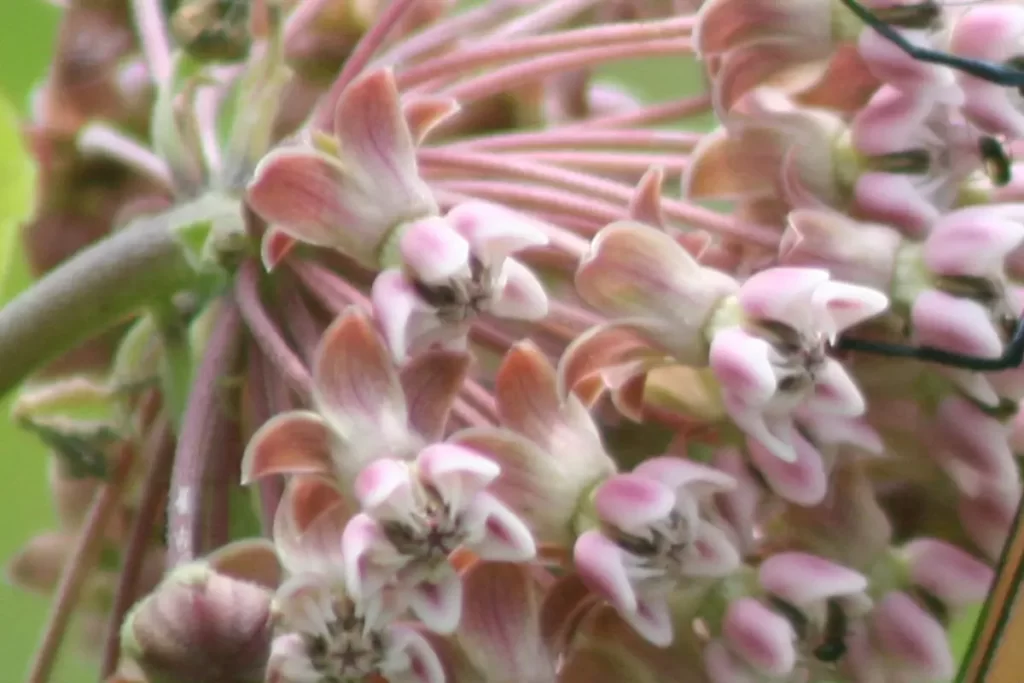
Milkweed plants are known for their vibrant flowers and the sweet nectar they produce. This nectar serves as a significant attraction for various insects, including wasps. Wasps are often in search of food sources that are rich in sugar, and the nectar from milkweed flowers provides them with the energy they need to carry out their daily activities.
The nectar not only feeds adult wasps but also plays a crucial role in their reproductive cycle. Female wasps require a substantial amount of energy to produce eggs, and the nectar from milkweed flowers is a readily available source.
The interaction between wasps and milkweed is not entirely detrimental. While wasps feed on the nectar, they also contribute to the pollination of the milkweed flowers. As they move from one flower to another, they transfer pollen, facilitating the reproduction of the plants.
This mutualistic relationship highlights the importance of understanding the ecological interactions between species and the need to maintain a balanced ecosystem.
Shelter and Breeding Ground
Milkweed plants offer more than just a food source for wasps; they also provide shelter and a suitable breeding ground. The structure of milkweed plants, with their large leaves and stems, creates an ideal environment for wasps to build their nests and lay their eggs. The leaves offer protection from predators and harsh weather conditions, creating a safe haven for wasp larvae to develop.
Furthermore, the milkweed plant attracts various other insects, which serves as a potential food source for the developing wasp larvae. Some species of wasps are known to lay their eggs directly on or near other insects, allowing their larvae to feed on them once they hatch. The abundance of potential prey makes milkweed an attractive location for wasps to establish their colonies.
By understanding why wasps are attracted to milkweed, we can better appreciate the complex interactions that take place within ecosystems and work towards maintaining a balance that supports biodiversity.
While it may be necessary to manage wasp populations to protect certain species or prevent them from becoming a nuisance, it is also important to recognize the role they play in the environment and to approach management efforts with ecological sensitivity.
Dangers of Wasps Near Milkweed
When wasps decide to set up residence near milkweed, it can create a host of issues. These flying insects are known for their aggressive nature, particularly when they feel threatened or when their nest is disturbed. This poses a significant danger, not just to other insects, but also to humans and pets who may unknowingly get too close.
One of the main concerns with having wasps near milkweed is their tendency to sting. Wasps are equipped with a stinger that they can use multiple times, injecting venom into their victim.
For most people, a wasp sting results in pain, redness, and swelling at the site of the sting. However, for those who are allergic, a single sting can trigger a severe, life-threatening allergic reaction known as anaphylaxis. This condition requires immediate medical attention.
Beyond the immediate physical threat that wasps pose, their presence can also disrupt the local ecosystem. Milkweed is a vital plant species, particularly for monarch butterflies, who rely on it for laying their eggs and for the larval stage of their lifecycle.
Wasps are known to prey on caterpillars, and their presence near milkweed can significantly reduce the number of monarch butterflies in an area.
How to Keep Wasps Away from Milkweed
4 Proven Strategies
Natural Repellents
Milkweed plays a vital role in the ecosystem, particularly as a crucial food source for monarch butterflies. However, the presence of wasps can pose a significant threat to these plants and the insects that rely on them.
One of the most eco-friendly and safe methods to protect milkweed is by using natural repellents. In this extensive guide, we will delve into various natural strategies to keep wasps at bay and ensure the safety and prosperity of your milkweed plants.
1. Essential Oils: A Fragrant Barrier

Essential oils are well-known for their potent aromas, and certain types can be highly effective in deterring wasps. Peppermint oil, in particular, has been shown to be an excellent repellent.
Wasps dislike the strong scent of peppermint, and a mixture of water and a few drops of peppermint oil sprayed around your milkweed can keep the wasps away. Ensure consistent application, especially after rain, for maximum effectiveness.
2. Soapy Water: A Simple Solution
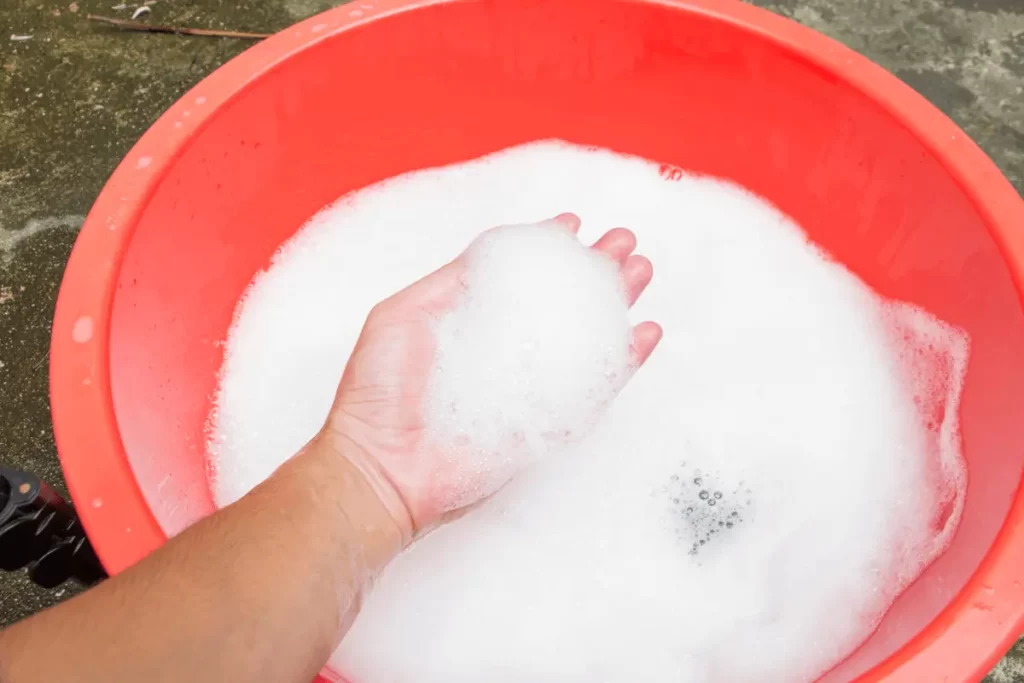
A mixture of water and dish soap sprayed directly onto the milkweed creates a slippery surface that wasps tend to avoid. The soapy solution can also act as a deterrent if sprayed around the area where the milkweed is planted. Be mindful of the concentration to avoid harming the milkweed.
3. Decoy Nests: Capitalizing on Territorial Behavior
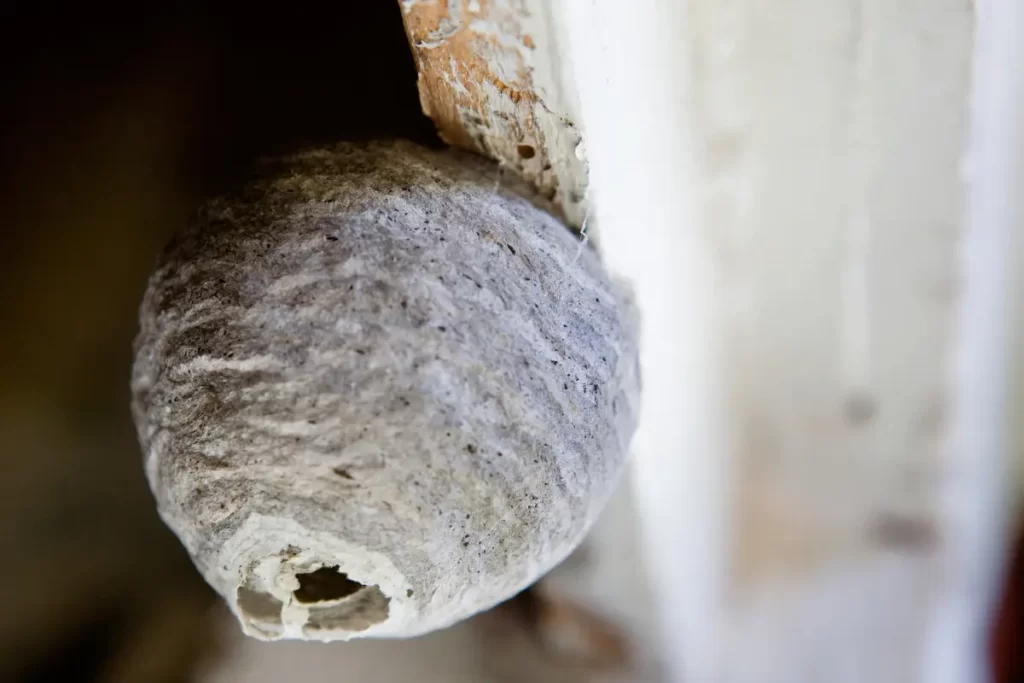
Wasps are highly territorial, and they tend to avoid areas where other wasp colonies are present. By hanging a decoy wasp nest near your milkweed, you can trick the wasps into thinking the territory is already claimed. Ensure to place the decoy in a visible location for it to be effective.
4. Herbal Companions: Plant-Based Protection
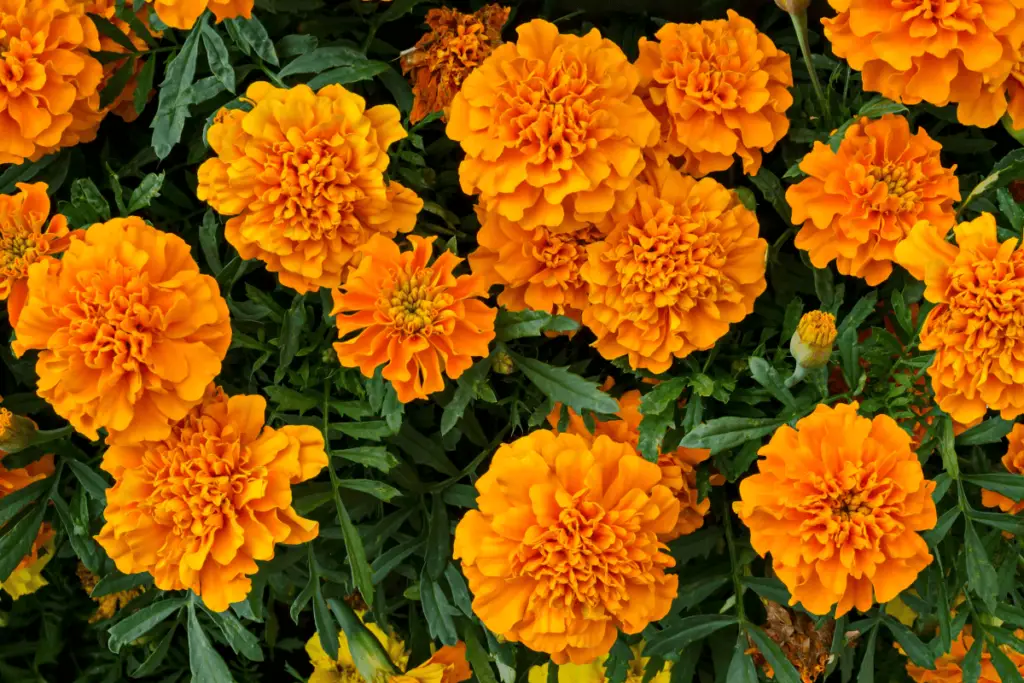
Certain herbs and plants are known to naturally repel wasps. Planting basil, mint, or marigold near your milkweed can create a protective barrier. These plants release scents that wasps find unpleasant, discouraging them from approaching.
5. Garlic Spray: A Pungent Preventative
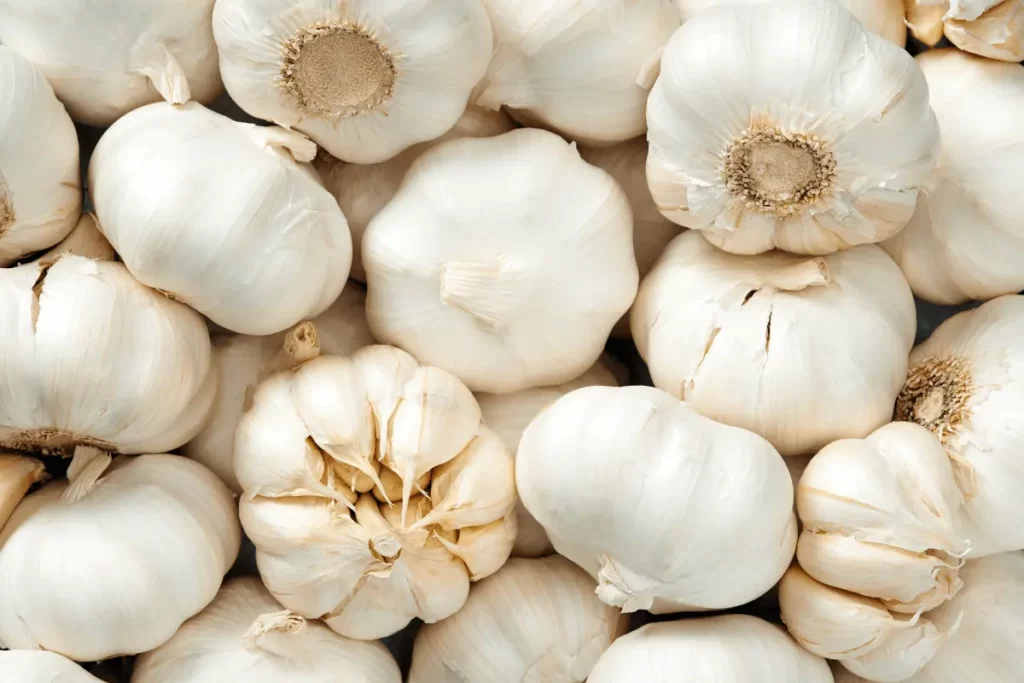
Crushed garlic mixed with water creates a pungent spray that can deter wasps. The strong smell of garlic is off-putting to wasps, and when sprayed around milkweed, it can act as a natural repellent. Regular application is necessary, particularly after rain or watering.
6. Cucumber Slices: An Unlikely Deterrent
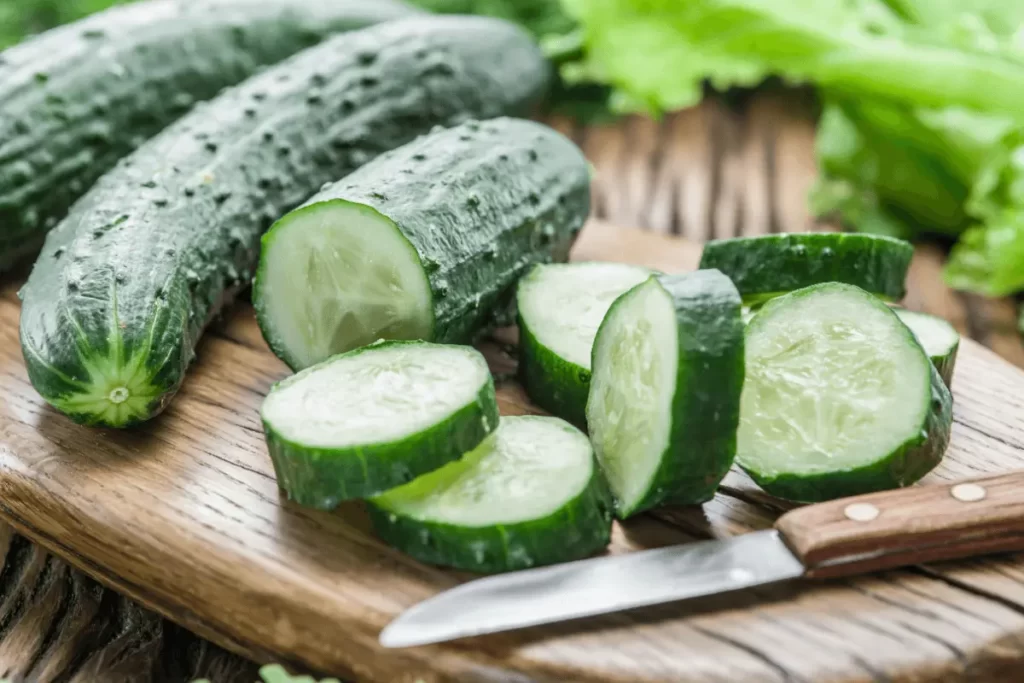
Cucumber slices placed around the base of milkweed plants can serve as a simple yet effective wasp repellent. Wasps dislike the taste and smell of cucumber, and the presence of slices can discourage them from lingering near the plants.
7. Vinegar Solution: A Sour Spray
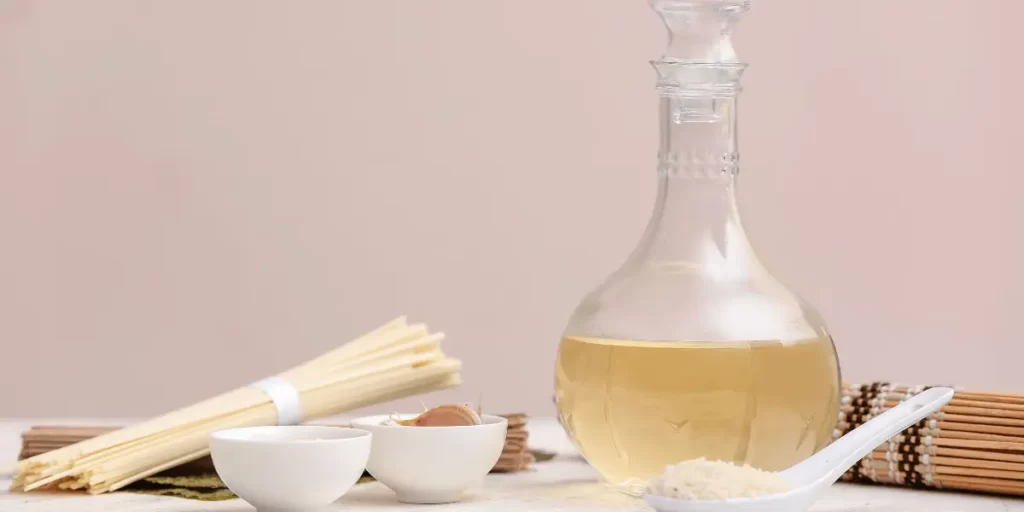
A mixture of water and vinegar sprayed around milkweed creates an inhospitable environment for wasps. The sour scent of vinegar is unappealing to wasps, making it a useful tool in your repellent arsenal. Be cautious with the concentration to avoid damaging the milkweed.
8. Citrus Peel Extract: A Zesty Barrier
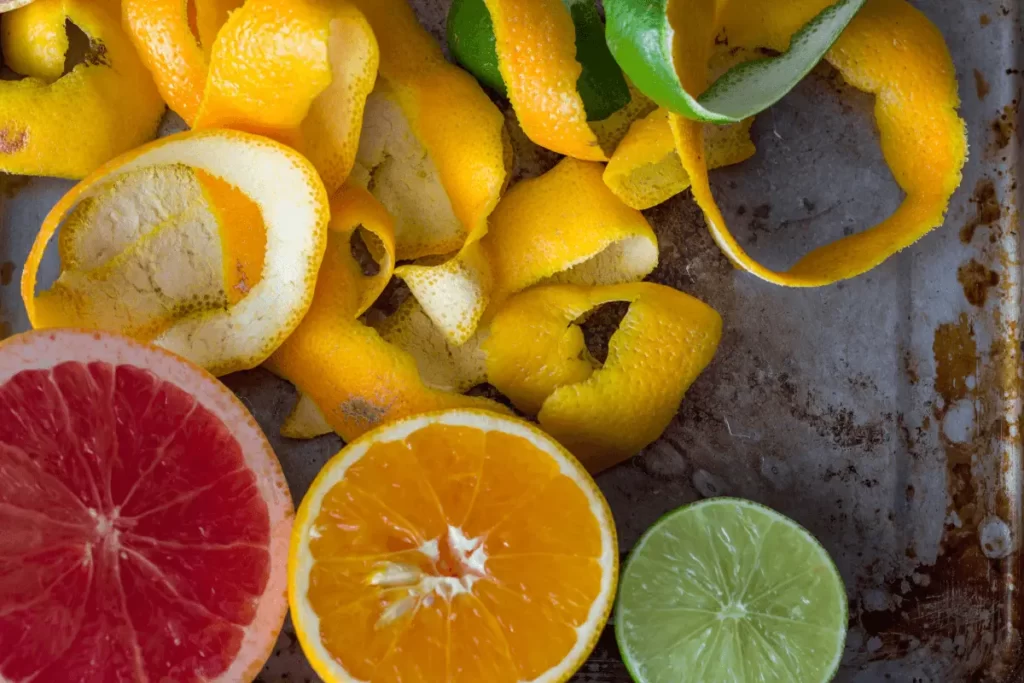
The oil extracted from citrus peels has been found to have wasp-repelling properties. By boiling citrus peels in water and spraying the solution around milkweed, you can create a fragrant barrier that wasps prefer to avoid.
9. Vanilla Mixture: A Sweet Shield
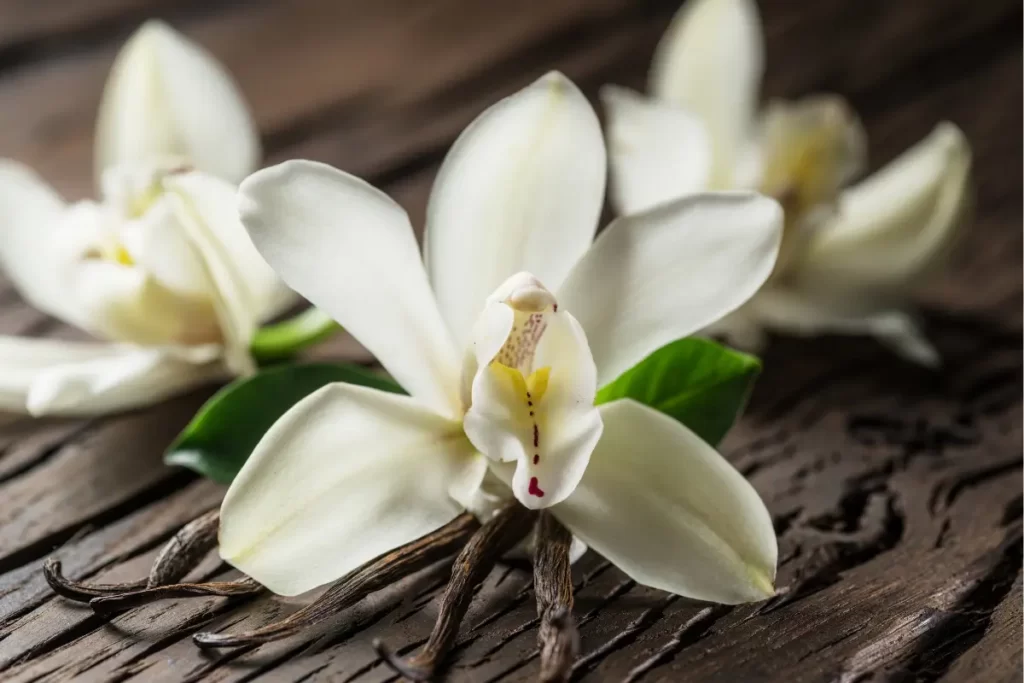
A mixture of vanilla extract and water can act as a sweet-smelling shield for your milkweed. Wasps do not appreciate the scent of vanilla, and spraying this mixture around the plants can help to keep them at a distance.
10. Coffee Grounds: A Bitter Deterrent
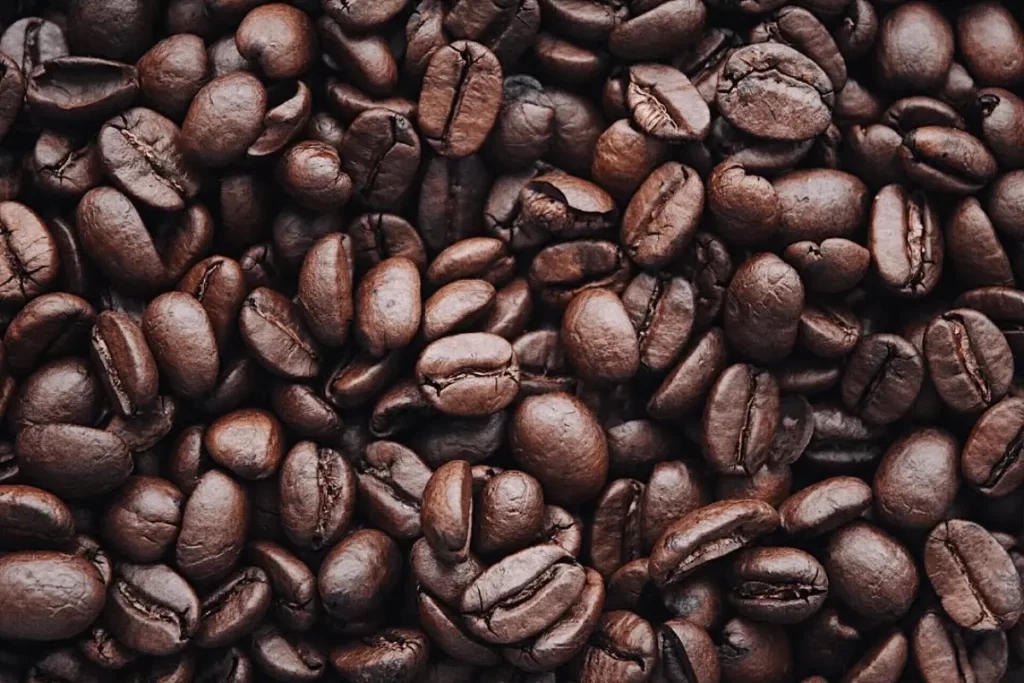
Used coffee grounds sprinkled around milkweed can serve as a bitter deterrent for wasps. The strong scent of coffee is unattractive to wasps, and its presence can help to protect your plants.
Environmental Adjustments
Protecting milkweed from wasps is crucial for maintaining the balance in your garden and ensuring the survival of monarch butterflies. One of the most sustainable approaches to achieve this is by making environmental adjustments.
Here, we will explore various strategies that can be implemented to create an environment that is unwelcoming to wasps but conducive for milkweed growth.
1. Optimizing Plant Placement: Strategic Gardening
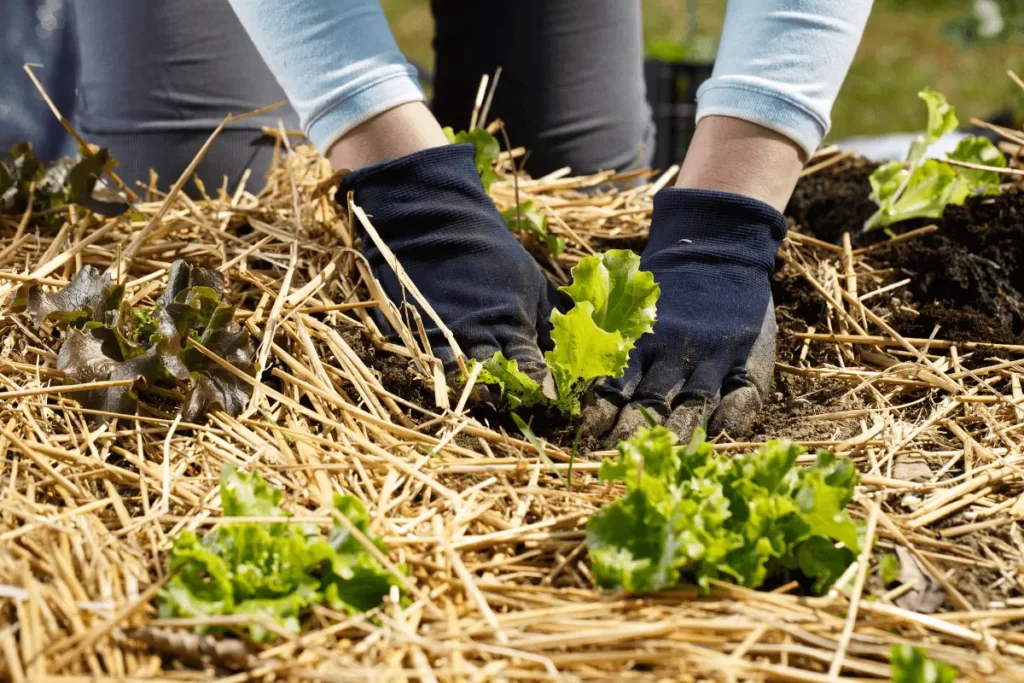
The location of your milkweed in the garden plays a significant role in deterring wasps. Plant milkweed away from areas where wasps are typically attracted, such as trash bins or compost piles.
Ensure that the milkweed is planted in an open space with ample sunlight, as wasps tend to prefer shaded areas. By strategically placing your milkweed, you can reduce the likelihood of wasp visits.
2. Maintaining a Clean Environment: Hygiene is Key
A clean garden environment is less likely to attract wasps. Regularly remove any fallen fruits, food scraps, or other potential wasp attractants from the vicinity of the milkweed. Ensure that any nearby trash bins are tightly sealed. A tidy garden space discourages wasps from establishing nests and frequenting the area.
3. Water Source Management: Eliminating Attraction Points
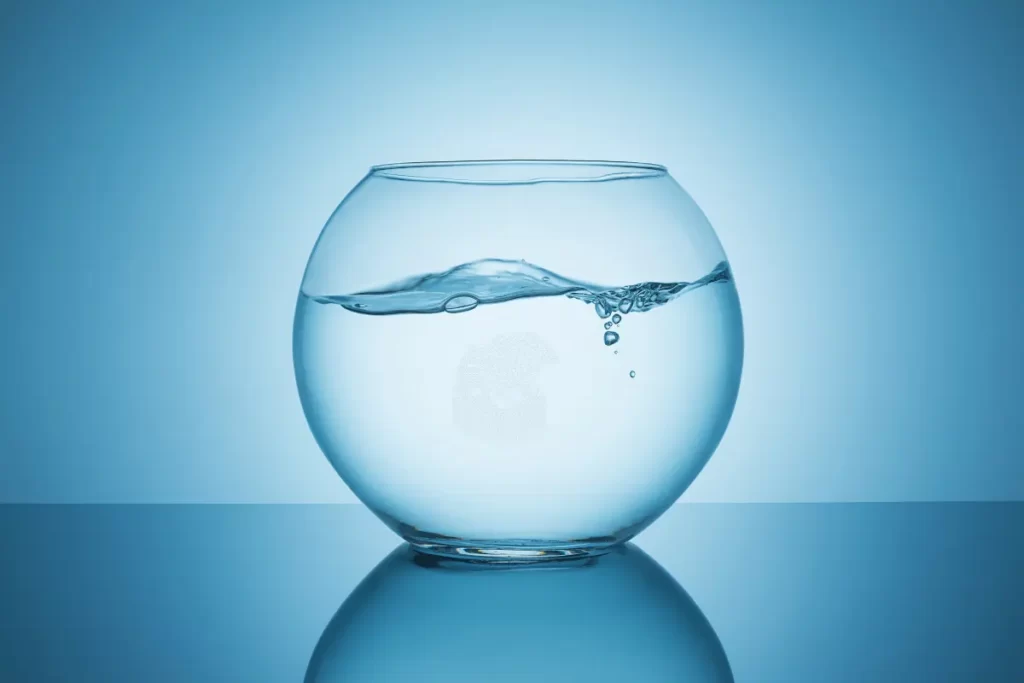
Wasps, like all living creatures, need water to survive. If there are water sources near your milkweed, such as birdbaths or pet water bowls, they might attract wasps. Ensure that any water sources are kept away from the milkweed, or are covered and inaccessible to wasps. This adjustment can significantly reduce the appeal of the area to wasps.
4. Barrier Creation: Physical Deterrence
Creating physical barriers can be an effective way to protect milkweed from wasps. Consider installing fine netting or mesh around the milkweed. This barrier allows the milkweed to grow and thrive while preventing wasps from accessing the plant. Ensure that the mesh is secured properly and checked regularly for any signs of wear or damage.
5. Companion Planting: Creating a Repellent Garden
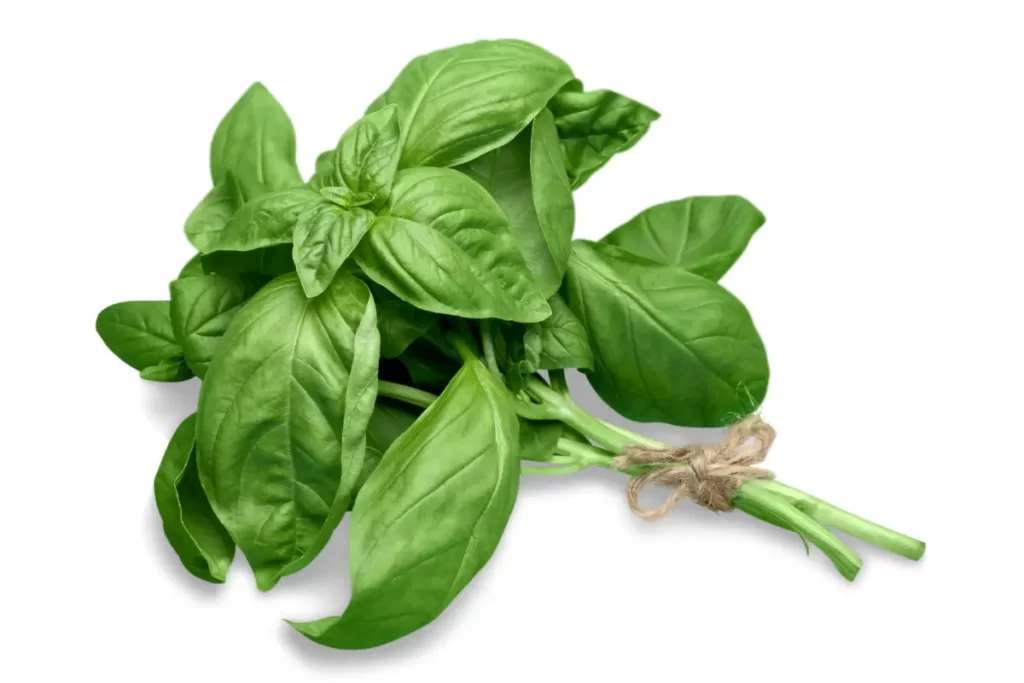
Some plants are known to naturally repel wasps, and incorporating these into your garden can provide an additional layer of protection for your milkweed. Consider planting marigolds, mint, or basil near your milkweed. These plants release scents that are unpleasant to wasps, deterring them from the area.
6. Reducing Hiding Spots: Open Space Gardening
Wasps tend to build their nests in hidden, sheltered spots. By reducing the number of hiding spots in your garden, you can make the environment less appealing for wasp nests. Prune any overgrown bushes, and keep the garden area open and well-maintained. An open garden layout makes it less likely for wasps to settle near your milkweed.
7. Utilizing Colors and Patterns: Visual Deterrence

Wasps are attracted to certain colors and patterns. Avoid using garden decorations or containers that are bright yellow or have floral patterns near your milkweed, as these can attract wasps. opt for neutral colors and simple patterns to make the area less appealing to wasps.
8. Regular Garden Monitoring: Staying Vigilant
Regularly inspect your garden for any signs of wasp activity. Look for wasp nests in hidden spots and address them promptly. By staying vigilant and proactive, you can prevent wasps from establishing a presence near your milkweed.
9. Providing Alternative Attractions: Diverting Attention
Consider creating an alternative attraction point for wasps away from your milkweed. Set up a feeder with sugary water at a safe distance from the milkweed, drawing the wasps away from the plant. This strategy provides wasps with an alternative source of food, reducing their interest in the milkweed.
10. Professional Assistance: When to Call the Experts

If the wasp problem becomes unmanageable or if you discover a large wasp nest near your milkweed, it may be time to seek professional help. Pest control experts can safely remove wasp nests and provide advice on long-term prevention strategies.
Mechanical Methods
When it comes to protecting your milkweed plants from wasps, mechanical methods can be highly effective. These strategies involve physical interventions and barriers that prevent wasps from accessing or harming the plants. Let’s delve into various mechanical methods that can help safeguard your milkweed and contribute to a thriving garden ecosystem.
1. Netting and Mesh Covers: A Physical Barrier
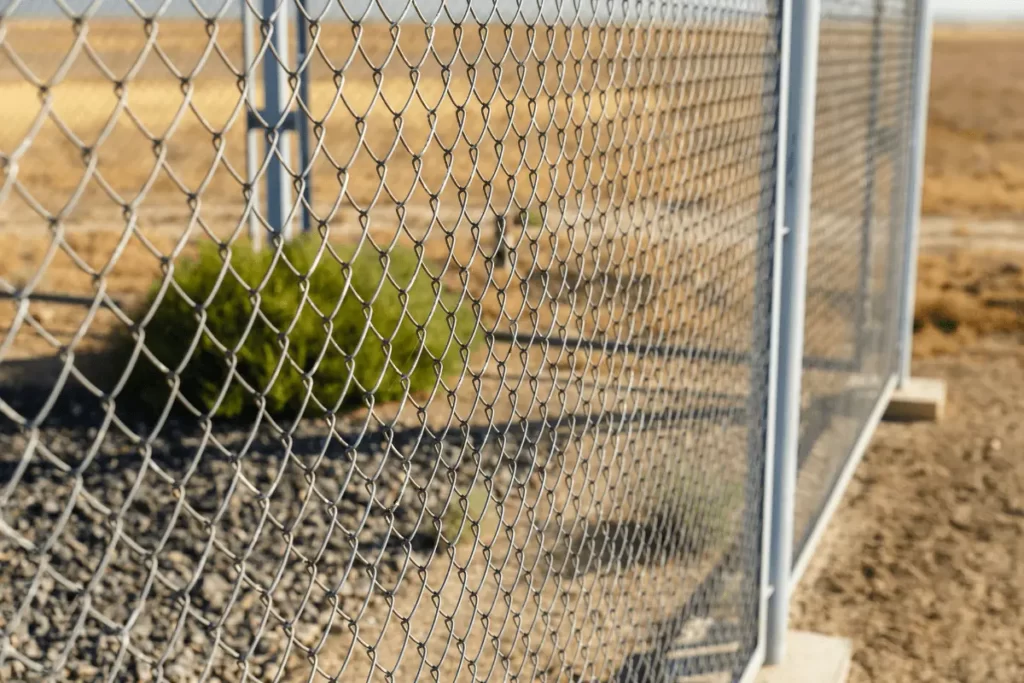
One of the simplest and most effective mechanical methods to protect milkweed is to cover the plants with netting or a fine mesh. This creates a physical barrier, preventing wasps from reaching the plants while still allowing sunlight, air, and water to penetrate.
Ensure that the mesh is secured tightly around the base of the plant, and check it regularly for any signs of damage or wear. Opt for a mesh with small enough holes to prevent wasps from getting through, but large enough to allow beneficial insects, like butterflies, to access the milkweed.
2. Collars and Cuffs: Protecting the Base
Wasps sometimes target the base of milkweed plants. You can protect this vulnerable area by using collars or cuffs made from materials like cardboard or plastic.
Wrap these around the base of the plant, creating a barrier that wasps cannot penetrate. Ensure that the collars are snug but not too tight, as you don’t want to restrict the plant’s growth.
3. Garden Fencing: Establishing Boundaries
Consider installing a garden fence around your milkweed plants. This not only keeps wasps away but also helps protect the plants from other potential threats like rodents or larger insects. Choose a fencing material with small enough gaps to prevent wasps from entering, and ensure that it is tall enough to provide adequate protection.
4. Sticky Traps: Catching Wasps
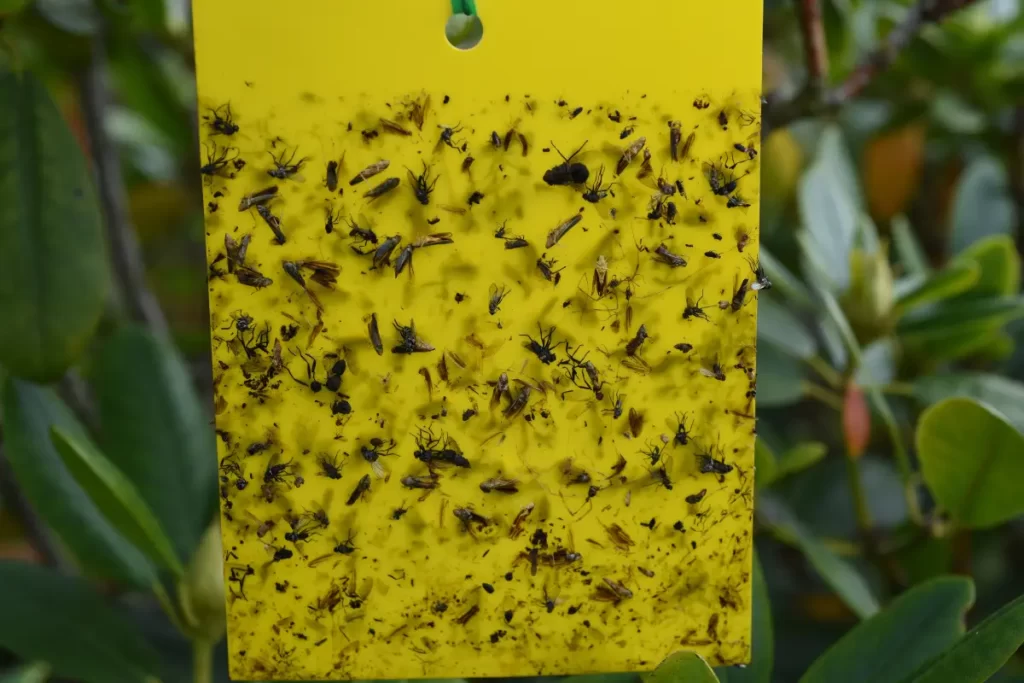
Sticky traps can be used to capture wasps that come too close to your milkweed. Place these traps around the perimeter of the area where the milkweed is planted. The wasps are attracted to the trap, get stuck, and are unable to reach the milkweed. Be sure to check the traps regularly and replace them as needed.
5. Water Traps: Drowning Wasps
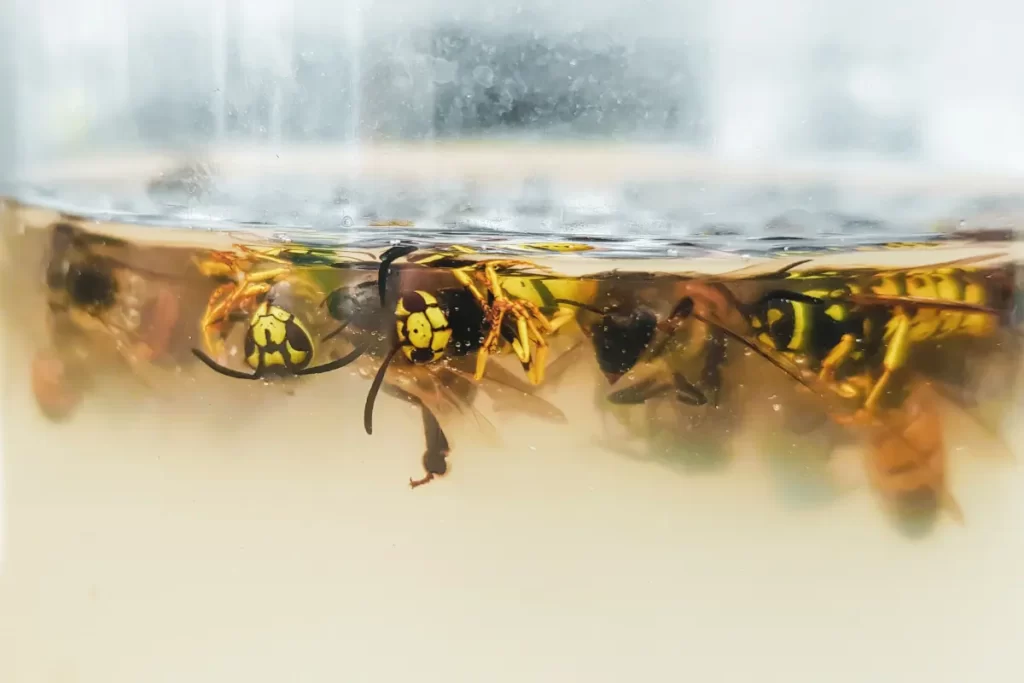
Water traps are another mechanical method to deter wasps. Fill a container with water and a small amount of dish soap, which breaks the water’s surface tension. Wasps attracted to the waterfall in and are unable to escape, eventually drowning. Place these traps away from the milkweed to draw wasps away from the plants.
6. Decoy Nests: Creating a No-Fly Zone
Wasps are territorial creatures and typically won’t build a nest near another wasp’s nest. Take advantage of this behavior by hanging a decoy wasp nest near your milkweed. This signals to wasps that the area is already claimed, deterring them from approaching. Ensure the decoy nest is visible and placed close enough to the milkweed to be effective.
7. Wind Chimes and Reflective Objects: Disrupting Flight
Wasps don’t like strong winds or bright, reflective lights. Use this to your advantage by hanging wind chimes or reflective objects like aluminum foil near your milkweed. The movement and reflections can disrupt wasps’ flight patterns and deter them from the area.
8. Pruning and Maintenance: Eliminating Hideouts
Regularly prune and maintain your milkweed to eliminate potential hiding spots or nesting sites for wasps. Trim any dead or dying foliage and keep the area around the milkweed clear of debris. A well-maintained garden is less appealing to wasps and more conducive to the health of your milkweed.
9. Raised Beds: Elevating Your Garden
Consider planting your milkweed in raised beds. This elevates the plants off the ground, making it more difficult for wasps to access them. Ensure that the sides of the raised beds are smooth and free of crevices where wasps could potentially build nests.
10. Physical Removal: A Last Resort
If you do find a wasp nest near your milkweed, sometimes the best course of action is physical removal. This should only be done with extreme caution and preferably by a professional pest control service. Attempting to remove a wasp nest on your own can be dangerous and result in wasps becoming agitated and aggressive.
Chemical Solutions
When it comes to protecting milkweed from wasps, chemical solutions can be a viable option. These methods involve using substances that deter or eliminate wasps, ensuring the safety of your milkweed plants.
Here’s a comprehensive guide to various chemical strategies, focusing on effectiveness while keeping environmental impact in mind.
Insecticidal Soaps: A Gentle Approach
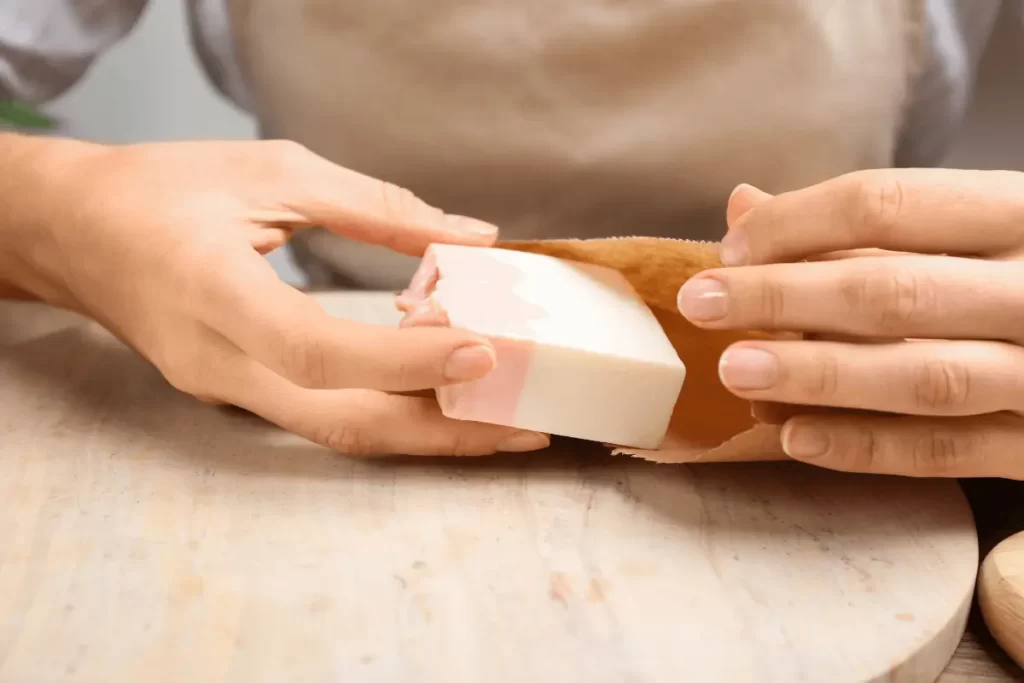
Insecticidal soaps are a popular choice for gardeners aiming to protect their plants from pests. These soaps work by breaking down the protective outer layer of insects, ultimately leading to dehydration. For wasps, you can mix a solution of insecticidal soap and water and spray it directly on any wasps or nests near the milkweed. It’s a targeted solution that minimizes harm to beneficial insects and plants.
Pyrethrin Sprays: A Fast-Acting Option
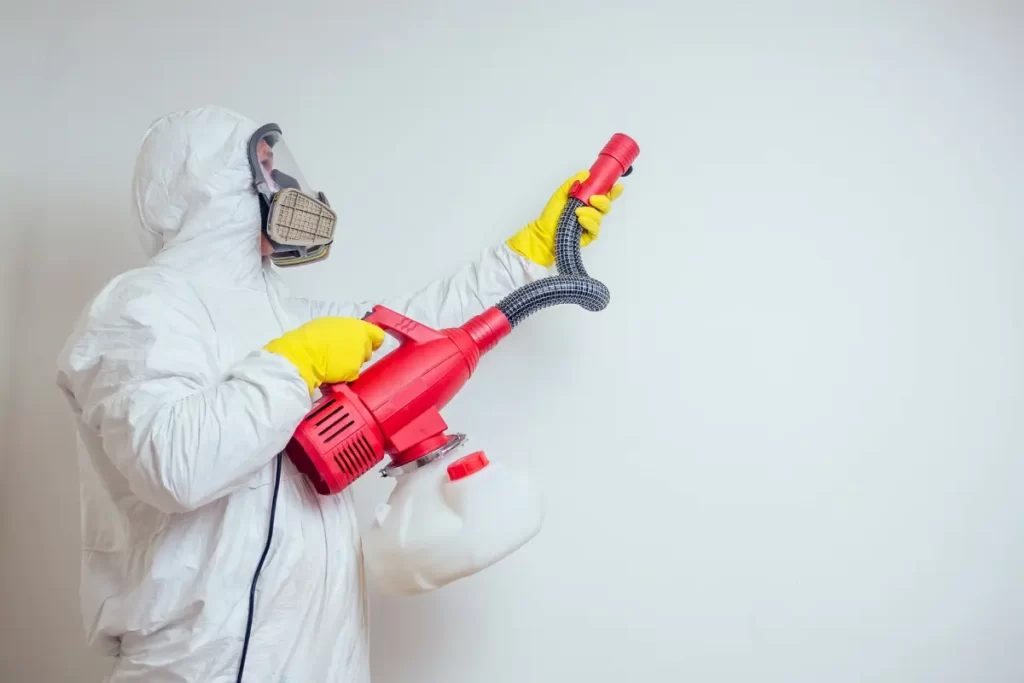
Pyrethrins are natural insecticides derived from chrysanthemum flowers. They work by attacking the nervous systems of insects, leading to rapid knockdown. You can find pyrethrin sprays in garden centers or online. Apply the spray around the milkweed, being cautious not to spray directly on the plants or during times when beneficial insects are active.
Chemical Wasp Sprays: A Last Resort
In cases of severe wasp infestations, commercial wasp sprays may be necessary. These sprays are designed to quickly eliminate wasps and their nests. When using chemical wasp sprays, follow the product instructions carefully, and aim to apply the spray in the evening when wasps are less active. Be aware that these sprays can be harmful to beneficial insects and plants, so use them sparingly and as a last resort.
Precautions and Safety Tips
When dealing with wasps near milkweed or any other area of your garden, safety should always be your top priority. Wasps can be aggressive, and their stings can cause allergic reactions in some people. Here’s a guide on the necessary precautions and safety tips to consider:
1. Wear Protective Clothing

If you need to get close to a wasp nest or areas where wasps are active, make sure to wear protective clothing. This includes long sleeves, pants, gloves, and a hat. In more extreme cases, you might even consider wearing a beekeeper’s veil to protect your face and neck.
2. Keep Children and Pets Away
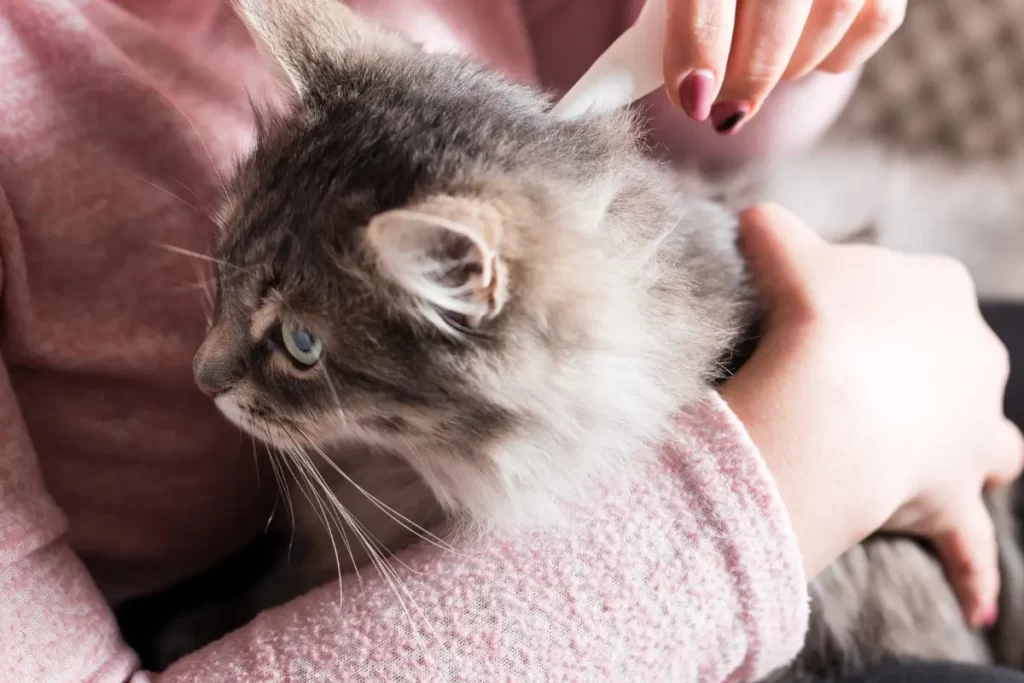
Ensure that children and pets are kept at a safe distance from areas where wasps are active. Wasps can be particularly dangerous to small children and pets due to their size and inability to protect themselves effectively.
3. Avoid Sudden Movements
When you are near a wasp nest or an area with a lot of wasp activity, avoid making sudden movements. Wasps are more likely to become aggressive and sting if they feel threatened.
4. Do Not Attempt to Remove Nests Yourself
If you find a wasp nest near your milkweed or anywhere else on your property, do not attempt to remove it yourself. Disturbing a nest can provoke the wasps and lead to multiple stings. Instead, call a professional pest control service to safely remove the nest.
5. Use Natural Repellents Safely
If you choose to use natural repellents or any chemical solutions, make sure to follow the instructions carefully. Use the products in well-ventilated areas and avoid spraying directly on the milkweed plants to prevent any potential damage.
6. Be Aware of Allergy Risks
If you or anyone in your household is allergic to wasp stings, take extra precautions. Have an emergency action plan in place and keep an epinephrine auto-injector (EpiPen) on hand in case of a severe allergic reaction.
7. Do Not Swat at Wasps
If a wasp comes near you, remain calm and still. Swatting at a wasp can provoke it and increase the risk of getting stung.
The Symbiotic Relationship
Milkweed plays a crucial role in the ecosystem, serving as the primary food source for monarch butterfly caterpillars. However, it also attracts a variety of other insects, including wasps. Understanding the symbiotic relationship between these species is essential for effective garden management.
1. Milkweed and Monarch Butterflies
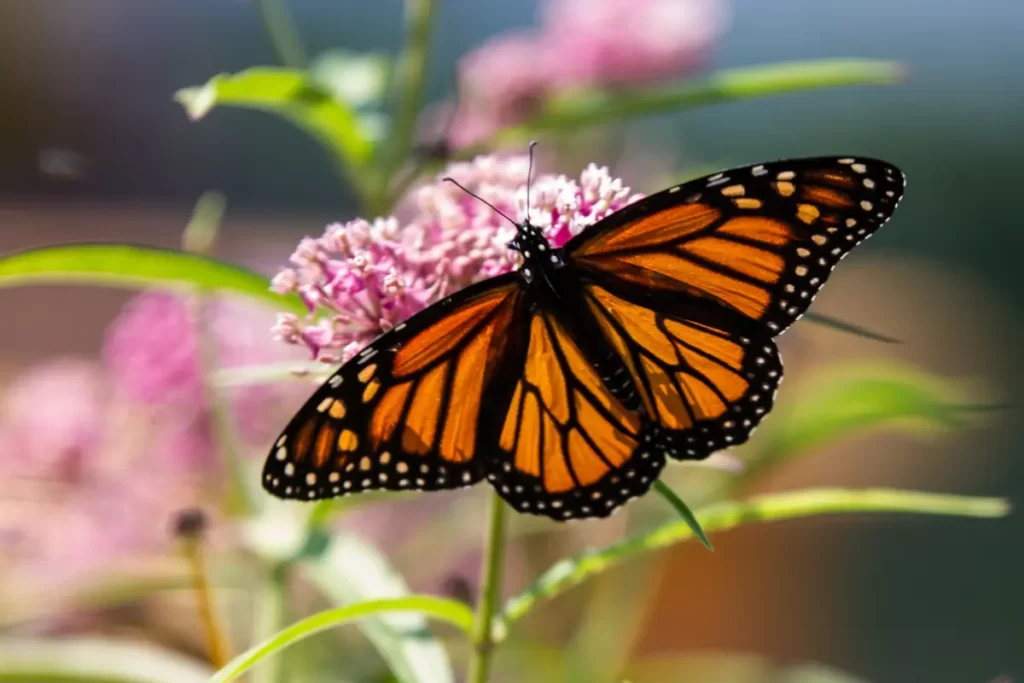
Milkweed is vital for monarch butterflies. The plants provide all the nutrients the caterpillars need to grow and develop. In return, monarch butterflies help to pollinate milkweed, ensuring the continuation of the species.
2. Wasps as Pollinators and Predators
Wasps are also attracted to milkweed, primarily for its nectar. While they do play a role in pollination, wasps can also be predators. They may prey on the monarch caterpillars and other beneficial insects. This predatory behavior is a natural form of pest control, but it can become problematic if the wasp population becomes too large.
3. Maintaining Balance
The key to managing wasps around milkweed is to maintain a balance. You want to protect the monarch caterpillars and other beneficial insects while also keeping the wasp population in check. This can be achieved through the strategic use of natural repellents, environmental adjustments, and, if necessary, professional pest control.
By taking the necessary precautions and understanding the symbiotic relationships at play, you can create a safe and thriving environment for both your milkweed plants and the beneficial insects that depend on them. Remember, the goal is not to eliminate wasps entirely but to manage their presence and ensure a harmonious balance in your garden.
How Wasps Can Actually Benefit Milkweeds
Wasps and milkweeds have a complex relationship. While wasps can pose threats to milkweeds and the insects that depend on them, they also offer certain benefits. Understanding these benefits helps in managing your garden effectively and promoting a balanced ecosystem.
1. Pollination:
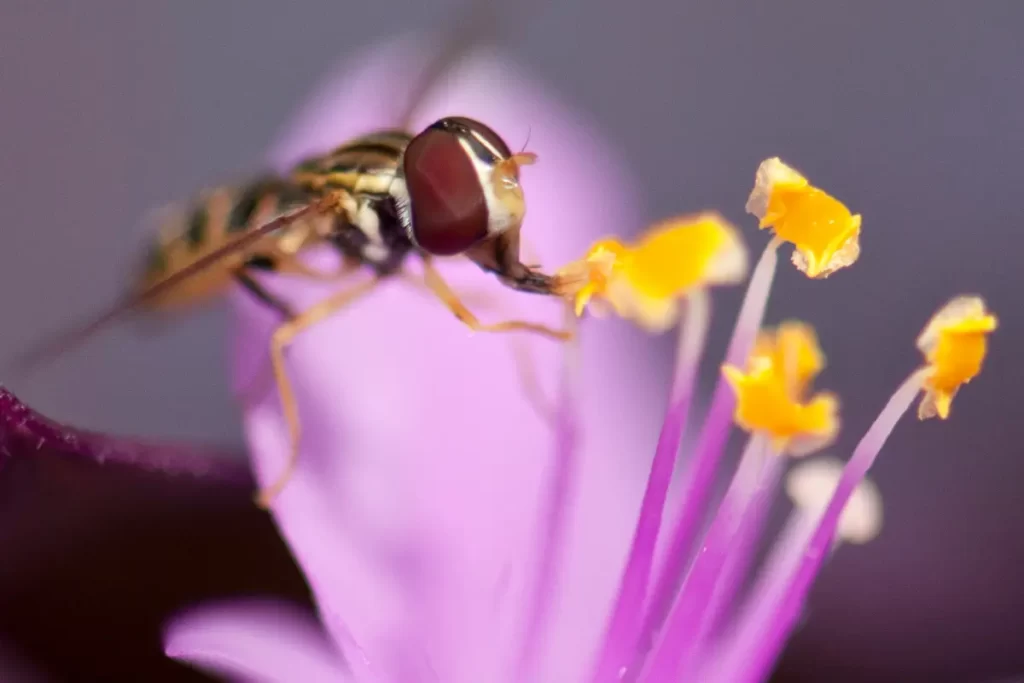
Wasps contribute to the pollination of milkweed flowers. When they visit milkweeds to feed on nectar, pollen sticks to their bodies and gets transferred to other flowers, aiding in the reproductive process of the plants. This is crucial for maintaining the population of milkweeds in your garden.
2. Pest Control:
Wasps are natural predators and play a significant role in controlling the population of other insects that might be harmful to milkweeds. They feed on various caterpillars and beetles that could otherwise damage or destroy the milkweed plants. This predatory behavior helps in maintaining a balanced ecosystem and protects the milkweeds from potential threats.
3. Soil Aeration and Fertilization:
Some species of wasps build their nests in the ground, which can lead to soil aeration. This enhances the soil structure, making it easier for plant roots to absorb nutrients and water. Additionally, the waste produced by wasps can contribute to soil fertility, indirectly benefiting the milkweeds.
4. Biodiversity:
Wasps are a part of the complex web of life and contribute to biodiversity. By supporting a diverse range of species, including wasps, you are promoting a healthier and more resilient garden ecosystem. Biodiversity ensures that the ecosystem can withstand changes and challenges, providing a stable environment for all organisms, including milkweeds.
5. Natural Balance:
Wasps help in maintaining a natural balance in the ecosystem. They keep the populations of other insects in check, preventing any single species from becoming dominant. This balance is crucial for the survival of milkweeds, as it ensures that no single predator or pest becomes too overwhelming.
Conclusion
Understanding the nuanced relationship between wasps and milkweeds is key to managing your garden effectively. While wasps can pose threats, particularly to the monarch butterflies that depend on milkweeds, they also offer significant benefits. From pollination to pest control, wasps play a vital role in maintaining a balanced and healthy ecosystem.
When managing wasps near milkweeds, the goal should be to minimize the threats while maximizing the benefits. This can be achieved through strategic gardening practices, such as using natural repellents and making environmental adjustments. By taking a balanced and informed approach, you can protect the milkweeds and the butterflies while also harnessing the benefits that wasps bring to the ecosystem.
FAQs
Stoepler, Teresa M., Andrea Edge, Anna Steel, Robin L. O’Quinn, and Mark Fishbein. “Differential pollinator effectiveness and importance in a milkweed (Asclepias, Apocynaceae) hybrid zone.” American Journal of Botany 99, no. 3 (2012): 448-458.
Fisher, Kelsey E., Richard L. Hellmich, and Steven P. Bradbury. “Estimates of common milkweed (Asclepias syriaca) utilization by monarch larvae (Danaus plexippus) and the significance of larval movement.” Journal of Insect Conservation 24 (2020): 297-307.
